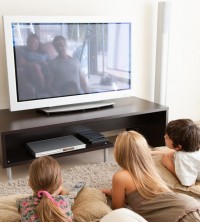
- Indoor assembly
- self-adhesive
| Mounting side: | Indoor assembly | |
| Liability: | self-adhesive | |
| max. width: | 104,0 cm | |
| max. height: | 2500,0 cm | |
| Durability: | 5 years (indoor installation) |

- Indoor assembly
- self-adhesive
| Mounting side: | Indoor assembly | |
| Liability: | self-adhesive | |
| max. width: | 104,0 cm | |
| max. height: | 2500,0 cm | |
| Durability: | 5 years (indoor installation) |

- Indoor assembly
- self-adhesive
| Mounting side: | Indoor assembly | |
| Liability: | self-adhesive | |
| max. width: | 104,0 cm | |
| max. height: | 2500,0 cm | |
| Durability: | 5 years (indoor installation) |
Anti-reflective film for TVs & displays
The problem: Reflective displays
Reflective displays are a well-known problem for people who frequently work with televisions and displays. The reflective light can cause the picture to become blurred and the colours to be distorted. This is particularly annoying when watching films or videos or working with text.
The solution: anti-reflective film
One way to solve the problem of reflective displays is to use anti-reflective films. These films are specially designed for use on displays and can refract light so that it does not reflect. Anti-reflective films are made of high-quality materials and can be easily applied to the screen. Not only do they improve picture quality, but they also relieve eye strain and allow for a better viewing experience in bright environments.
The function of anti-reflection films
The way anti-reflection films work is based on the principle of interference. This means that the light is refracted in such a way that there are no more disturbing reflections. For this purpose, the film is provided with a special coating that reflects the light in such a way that it is not reflected in the surroundings. The coating is so thin that it does not impair the image on the display.
Reasons for choosing anti-reflective film
There are many reasons why you should choose an anti-reflective film for your TV or display. These are the advantages for a screen film:
- Firstly, it ensures better picture quality, as annoying reflections are avoided. This makes the picture look clearer and sharper.
- After applying the anti-reflective film, the view of the screen remains unrestrictedly clear and razor-sharp. This is due to the very high transparency of the anti-reflection film.
- On the other hand, an anti-reflective film can also help to relieve eye strain, as you no longer have to fight against annoying reflections.
- Only the contrast values of the display are somewhat reduced by the minimally rough film surface. With most devices, the contrast value can be increased in the settings to counteract this.
Anti-reflective film minimises annoying reflections
Anti-reflective films work particularly well when the display to be anti-reflective coated is glossy (glare). These panels are often used on modern OLED TVs or tablets & laptops. These high-gloss displays are very susceptible to strong reflections, especially when they are used outdoors. The unpleasant reflections can be caused by sunlight falling on the back or artificial light sources. An anti-reflective film helps to make it easier to work or watch films outdoors or in bright rooms.
Easy installation and removal
The product uses a silicone adhesive layer that allows for easy and bubble-free installation. This technology allows the film to be repositioned and leaves no residue after removal! The film can simply be lifted at one corner and removed again.
FAQ's about anti-reflection films
How does an anti-reflection film work?
Anti-reflection film has a slightly roughened surface. The incident light is refracted in it and reflected back at different angles.
Which displays are suitable for an anti-reflective film?
Our anti-reflective film can be used on any (touch) display that suffers from high reflection. Only the touch capability of Elo touch monitors with IntelliTouch® technology may no longer be available after applying the film. A test should be made with a free sample before purchase.
How is anti-reflection film applied?
The anti-reflective films are applied dry. Make sure that the anti-reflection film is pulled off the transparent backing film piece by piece. The exposed reverse side is directly squeegeed to prevent air pockets. If this should happen, the film can be lifted and reapplied.
How do you remove an anti-reflection film?
Anti-reflection films can simply be lifted at one corner and removed again. Nothing stands in the way of reapplying the film. If the adhesive power weakens over time, it is recommended to wash off the film and clean it of grease residues.









